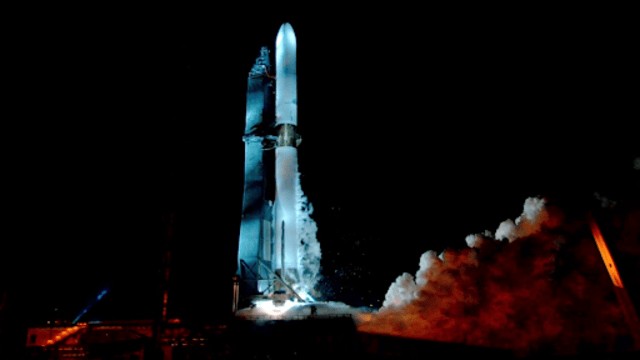
Blue Origin released this image of the New Glenn rocket during a hotfire test at Launch Complex 36 in Cape Canaveral, Florida, on December 27, 2024. AP Photo
After nearly 25 years since Jeff Bezos founded Blue Origin, the company is about to achieve a milestone moment. Blue Origin’s New Glenn rocket, one of the most powerful vehicles ever designed, is set to make its first orbital flight attempt. This significant launch will take place from Cape Canaveral Space Force Station in Florida, scheduled for 1 a.m. ET on Sunday. The mission will be streamed live on Blue Origin’s YouTube channel and website, giving the public an opportunity to witness history.
The New Glenn rocket, standing approximately 320 feet tall (98 meters), is not just another rocket for Blue Origin. It is their first design capable of delivering satellites to orbit, and it is also one of the world’s most powerful rockets. Classified as a heavy-lift launch vehicle, New Glenn produces more than double the power of SpaceX's Falcon 9 rocket, which has been the dominant force in the commercial space sector.
For this initial flight, New Glenn will carry a unique payload: a Blue Origin-made technology called Blue Ring Pathfinder, which will demonstrate the company’s ability to operate in space. Although there will be no satellite deployment during this mission, the experiment is crucial in ensuring that the rocket and its systems are functioning properly.
The flight will begin with the rocket's seven BE-4 engines at the base of its first-stage booster, giving the initial burst of power required for takeoff. After a few minutes, the booster will detach from the rest of the rocket once it has used up most of its fuel. The upper part of the rocket, which includes the payload fairing designed to protect the cargo, will continue its journey toward space.
The booster, meanwhile, will attempt to land back on Earth on a recovery platform named Jacklyn, a nod to Bezos' mother. This maneuver involves the booster using fins and wing-like attachments, which help guide the rocket toward the landing area. Before landing, the booster will reignite some of its engines and deploy six large legs to soften the landing. This step is part of Blue Origin’s broader goal of reusing rocket components, a strategy designed to reduce launch costs, much like SpaceX's reusable Falcon rockets.
As the New Glenn rocket’s upper stage continues its ascent, two more engines designed for use in space will take over, pushing the rocket to speeds necessary for entering orbit—around 17,500 miles per hour, or nearly 23 times the speed of sound. The goal is to complete the mission by reaching the designated orbit and deploying the Blue Ring Pathfinder.
However, this mission is not without risks. The company has only tested the BE-4 engines for 24 seconds in ground tests. During this flight, the engines must fire for significantly longer to ensure a successful launch. Any issues that arise could result in the activation of the rocket's self-destruct system, which would destroy the vehicle to prevent any harm to people or property.
While the mission's success is critical for Blue Origin’s long-term plans, failure to land the rocket booster back on the platform would not be catastrophic. Recovering the booster is primarily aimed at reducing costs for future missions. Regardless of the outcome, this flight positions Blue Origin to potentially become a key player in the launch market.
As the space industry evolves, the demand for powerful, heavy-lift rockets has grown. New Glenn, with its ability to carry significant payloads, is designed to meet that need, especially as satellite sizes increase. According to Caleb Henry, director of research at Quilty Space, the heavy-lift sector is becoming even more vital for the future of space exploration.















